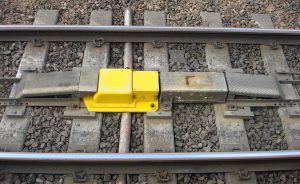Introduction
The vast network of railways that crisscross the United Kingdom is a marvel of modern transportation. To ensure the safety of passengers, crew, and the infrastructure itself, the UK railways employ a sophisticated system known as the Automatic Warning System (AWS). This article delves into the intricacies of the AWS, explaining how it works and its critical role in maintaining the safety and efficiency of the UK’s railway network.
Understanding the AWS
The Automatic Warning System, commonly referred to as AWS, is a crucial component of the UK’s railway signaling and safety infrastructure. It is designed to prevent accidents by automatically warning train drivers about upcoming signals, speed restrictions, and potential hazards on the track. The AWS operates in conjunction with other safety systems, including the Train Protection and Warning System (TPWS), to provide multiple layers of protection.
How Does the AWS Operate?
The AWS primarily relies on a series of equipment and signals located along the tracks and in the driver’s cab. Here’s a breakdown of how the AWS works:
- Trackside Equipment: AWS uses magnets known as “AWS magnets” placed between the rails to transmit signals to approaching trains. These magnets are typically installed a few hundred yards in advance of signals, speed restrictions, or other safety-critical points on the track.
An AWS ramp seated in between the rails known as the 4 foot - Cab Equipment: Each train is equipped with an AWS receiver in the driver’s cab. This receiver is connected to a display and a distinctive horn known as the “AWS horn.” The display visually communicates warnings to the driver, while the horn provides audible alerts.
- Signal Aspect Indicators: AWS relies on signal aspect indicators that change color to convey specific information to the driver. For example, a green indicator signifies a clear track ahead, while a red indicator indicates a warning or stop condition.
How AWS Warns Train Drivers
The AWS operates on a simple but effective principle: it sends warning signals to the train driver, who must then acknowledge them. Here’s how the process unfolds:
- Approach to AWS Magnet: As a train approaches an AWS magnet embedded in the track, the magnet emits an electromagnetic pulse.
- Cab Alert: The train’s AWS receiver detects the pulse and translates it into a warning signal, causing the cab’s display to show a yellow warning light and simultaneously activating the AWS horn. The distinctive horn sound is known as the “AWS sunflower” because it resembles the shape of a sunflower.
The AWS sunflower in the cab of a train the one in this photo is in its caution status - Driver’s Response: When the driver receives the warning, they must acknowledge it within a specified time frame, typically around 6-9 seconds. This acknowledgment is typically done by pressing a button on the cab’s control panel known as the “AWS cancel” button.
- Actions Based on the Signal: Depending on the signal received from the trackside equipment, the driver takes appropriate action. If the warning is for a speed reduction, the driver must reduce the train’s speed to the prescribed limit. If it is a signal indicating a stop ahead, the driver must bring the train to a complete stop before proceeding.
- Continuous Monitoring: The AWS continually monitors the train’s speed and location relative to the warning signals. If the driver fails to acknowledge the warning, or if the train does not respond appropriately, the AWS will apply the emergency brakes, bringing the train to a halt.
AWS in Action
The AWS system plays a vital role in maintaining the safety of the UK railway network, and it is particularly effective in preventing accidents caused by driver error or inattentiveness. By continuously monitoring the train’s position and providing timely warnings, it acts as an additional layer of defense against potential disasters.
- Preventing Signal Passed at Danger (SPAD): One of the primary functions of AWS is to prevent Signal Passed at Danger (SPAD) incidents, where a train passes a red signal. SPADs can lead to catastrophic collisions, derailments, and loss of life. AWS ensures that train drivers are always aware of the signal aspect and take immediate action if required.
- Reducing the Risk of Overspeeding: AWS also helps prevent overspeeding incidents by warning drivers of upcoming speed restrictions. This is crucial, especially when trains transition from high-speed sections to areas with lower speed limits, such as stations or tight curves.
- Enhancing Safety During Adverse Conditions: The AWS system remains operational even in adverse weather conditions, providing a critical safety net when visibility is reduced due to fog, heavy rain, or snow.
- Complementing Other Safety Systems: AWS works in conjunction with the TPWS, another safety system that automatically applies the emergency brakes if a train exceeds a permissible speed or approaches a danger point too quickly. Together, AWS and TPWS offer comprehensive protection against various safety hazards.
Final Say
The Automatic Warning System (AWS) is a vital safety feature in the United Kingdom’s extensive railway network. By providing timely warnings to train drivers about signals, speed restrictions, and potential hazards, AWS helps prevent accidents, save lives, and protect the integrity of railway infrastructure. This sophisticated yet straightforward system is a testament to the commitment to safety in the UK’s railways, ensuring that passengers and crew can travel with confidence and peace of mind.
What other railway equipment would you like articles about? let us know in the comments. want to see a video on how AWS works Youtuber WestieRail has a great tutorial here. Watching it may give you a hint into what our next article is going to be about. For more featured articles click here.








